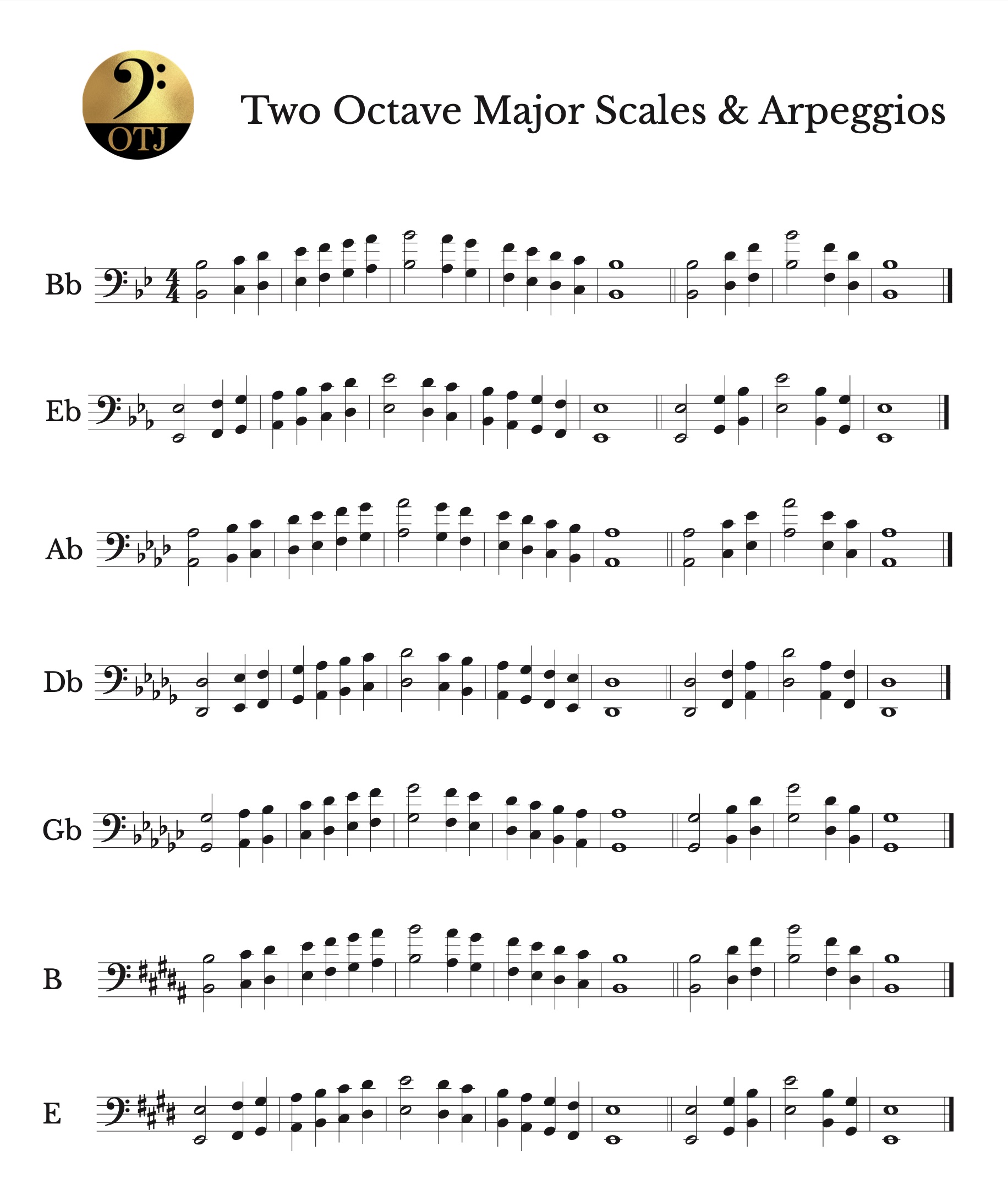Two Octave Major Scales & Arpeggios
 Get the Two Octave Major Scales & Arpeggios PDF
Get the Two Octave Major Scales & Arpeggios PDF
As you and your ensemble members improve you will practice and perform more advanced and challenging music. These challenges come in many forms including range, tempo, dynamics and articulation. Learning and practicing two octave scales and arpeggios can help you to prepare for all of these challenges. These scales also introduce the use of the F-attachment.
When performing these scales and arpeggios, breathe in the same place regularly. One suggestion is to play the first octave then take a breath. Play up and down the second octave on one breath, take a final breath then finish the last octave descending. Practice slowly at first and when these scales and arpeggios are easy, increae the tempo. When you begin playing faster tempos, also play the slower and medium tempos on a regular basis.
Vary the dynamics from day to day, including pp, p, mp, mf, f and ff dynamics. Likewise, vary your articulation styles including no tongue (glissando), legato, tenuto, normal, staccato and marcato. Here are some good YouTube videos talking about articulation and trombone sound:
James Markey discusses glissando and legato
Jiggs Whigham demonstrates legato and separated articulations in Classical and Jazz Styles
Denson Paul Pollard discusses trombone sound and attack (articulation)
As Mr. Pollard says in his video, record yourself often and listen to your sound and articulation. Doing this every day will give you the best idea about how you sound, and show you what you are doing well, and where you might want to improve. Share your recordings with your friends and teachers for feedback.
When you have learned your two octave major scales and arpeggios it is a good time to think about taking individual lessons with a professional trombone teacher. As a young musican, having regular individual lessons is the best way to improve by making the most of your practice time and efforts. Good luck, and go practice!
